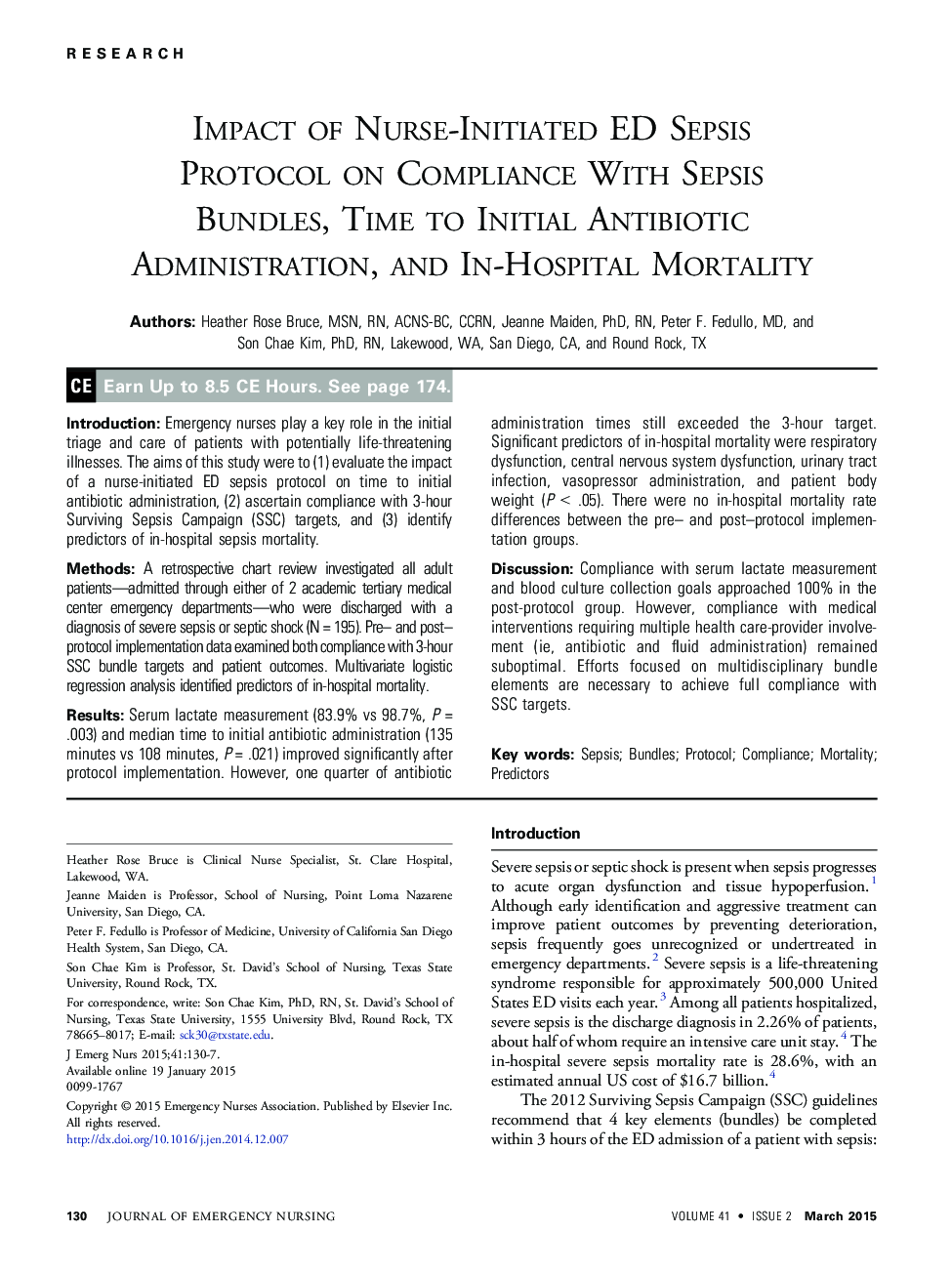| کد مقاله | کد نشریه | سال انتشار | مقاله انگلیسی | نسخه تمام متن |
|---|---|---|---|---|
| 2609720 | 1134565 | 2015 | 8 صفحه PDF | دانلود رایگان |
IntroductionEmergency nurses play a key role in the initial triage and care of patients with potentially life-threatening illnesses. The aims of this study were to (1) evaluate the impact of a nurse-initiated ED sepsis protocol on time to initial antibiotic administration, (2) ascertain compliance with 3-hour Surviving Sepsis Campaign (SSC) targets, and (3) identify predictors of in-hospital sepsis mortality.MethodsA retrospective chart review investigated all adult patients—admitted through either of 2 academic tertiary medical center emergency departments—who were discharged with a diagnosis of severe sepsis or septic shock (N = 195). Pre– and post–protocol implementation data examined both compliance with 3-hour SSC bundle targets and patient outcomes. Multivariate logistic regression analysis identified predictors of in-hospital mortality.ResultsSerum lactate measurement (83.9% vs 98.7%, P = .003) and median time to initial antibiotic administration (135 minutes vs 108 minutes, P = .021) improved significantly after protocol implementation. However, one quarter of antibiotic administration times still exceeded the 3-hour target. Significant predictors of in-hospital mortality were respiratory dysfunction, central nervous system dysfunction, urinary tract infection, vasopressor administration, and patient body weight (P < .05). There were no in-hospital mortality rate differences between the pre– and post–protocol implementation groups.DiscussionCompliance with serum lactate measurement and blood culture collection goals approached 100% in the post-protocol group. However, compliance with medical interventions requiring multiple health care-provider involvement (ie, antibiotic and fluid administration) remained suboptimal. Efforts focused on multidisciplinary bundle elements are necessary to achieve full compliance with SSC targets.
Journal: Journal of Emergency Nursing - Volume 41, Issue 2, March 2015, Pages 130–137
